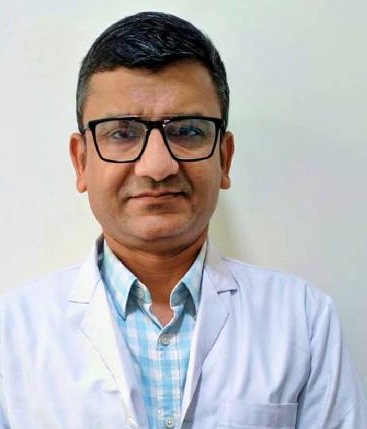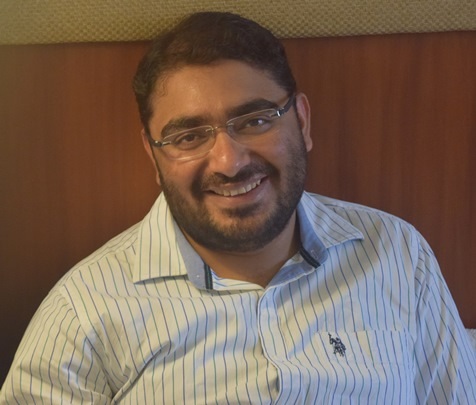Ear Pinning - Otoplasty (Ear Correction) Surgery and Aftercare

Treatment Duration
1 Hours
------ To ------2 Hours
Treatment Cost
₹ 40,000
------ To ------₹ 1,75,000

Loading...
Otoplasty is a surgery performed to change the shape, size and position of the ear. It is a form of cosmetic surgery used to correct any structural abnormality involving the outer ears to improve the overall appearance. Otoplasty can be performed after the ears grow to their full size or shape. Usually, individuals above the age of five can undergo this procedure to correct ear abnormalities. Ear defects developed due to an accident or a sports injury can also be improved using otoplasty.
| Surgery Name | Otoplasty |
| Alternative Name | Ear Correction Surgery, Ear Pinning |
| Conditions Treated | Ear which is larger in proportion, Ear sticking out, Aesthetics |
| Benefits of Surgery | Minimally Invasive, Less recovery and procedure time |
| Perfromed By | Plastic Surgeon |
You can check Ear Correction Surgery (Otoplasty) Cost here.
Types of Otoplasty
- Ear Augmentation: It is a procedure to increase the size of the ear. In some cases, the ears don’t develop fully, so the outer ear appears to be smaller in size. People with this issue undergo ear augmentation to enlarge their outer ears with respect to the size of the head.
- Ear Pinning: This procedure improves protruding ears by bringing them closer to the face. Normally, the outer ears protrude two centimetres from the side of the head. If the ears stick out more than two centimetres, it affects the overall appearance of an individual. In such cases, people may choose otoplasty to draw their ears closer to the head.
- Ear Reduction: Some individuals are born with large ears. This condition is known as Macrotia. Surgery is required to reduce the size of the ears and make them look normal.
Outer Ear - Anatomy and Physiology
In medical terms, the outer ear is known as an auricle or pinna. It can vary in shape and size, giving each of us a unique appearance. The pinna is the visible portion of the outer ear. It is responsible for collecting the sound waves and directing them into the ear canal (external auditory meatus), where the sound is amplified.Cartilage (a firm connective tissue but softer and more flexible than a bone) and skin make up the outer ear. There are three different parts in the outer ear- tragus, helix, and lobule.
The two main functions of an outer ear are:
- Gathering sound
- Aesthetic appeal
Expert Doctors (10)
NABH Accredited Hospitals (10)


Who Needs This Procedure?
People with the following conditions usually need this procedure:
- Ears sticking out too far from the head
- The ears are larger or smaller than the normal size
- Abnormal ear shape due to an injury or congenital disability (ear defect by birth)
- If a previous surgery didn’t give desired results
How is Otoplasty performed?
Otoplasty is typically an outpatient surgery, which means the patient is discharged from the hospital on the same day of the surgery. Depending on the type of surgery, it may take 1 to 3 hours to carry out the procedure.
The plastic surgeon chooses specific otoplasty techniques depending on the patient's requirement. The surgery requires making a cut in the back of the ear and sometimes removing extra cartilage to correct the abnormality.
The plastic surgeon chooses specific otoplasty techniques depending on the patient's requirement. The surgery requires making a cut in the back of the ear and sometimes removing extra cartilage to correct the abnormality.
What to expect before and on the day of the surgery?
- The patient needs to reveal details regarding all the medicines they have been taking.
- The doctor asks questions about the past surgeries and medical conditions of the patient.
- Blood thinners such as Warfarin, Aspirin, or Plavix, including certain anti-inflammatory medicines and vitamin supplements, should be avoided before the surgery as per the doctor’s advice, as they can increase bleeding.
- The doctor examines the shape, size, and placement of the ears to decide the treatment options. He/she may also take pictures of the patient’s ears for medical records.
- The doctor explains in detail the risks and benefits of otoplasty. The patient can also ask all the doubts regarding the surgery.
On the Day of Surgery
- An anesthesiologist induces anaesthesia, so the patient doesn’t feel pain during the surgery. For younger children, general anaesthesia is preferred to render them unconscious for the surgical procedure.
- However, local anaesthesia is preferred for older children and adults, which only numbs part of the body.
During the Surgery
- Based on the treatment technique required by the patient, the surgeon makes incisions in the desired location of the ear.
- The surgeon makes incisions on the back or within the inner folds of the ears.
- If required, he/she removes extra cartilage or skin and folds the cartilage in the desired position. This new shape of the ear is secured through internal stitches.
What to expect after the surgery?
After the Surgery
- Healthcare providers cover the ear with bandages to provide support.
- The patient is discharged once they are stable after the treatment.
- The doctor may give pain-relieving medicines and follow-up instructions for self-care at home.
- Soreness
- Numbness
- Bruising
- Restrictions
- Avoid itching or rubbing the ears post-surgery
- Avoid sleeping on the side to keep the pressure off the ears
- Wear button-down shirts or loose-fit collars to prevent them from touching the ears
After the surgery, the patient can:
- Wash hair after 14 days of the surgery
- Resume swimming after 4-6 weeks
- Return to school within 1-2 weeks
- Play contact sports after 12 weeks
- There are no restrictions on travelling
First Follow Up Appointment
- The patient needs to visit the hospital one day after the surgery to get the stitches examined. The doctor may give follow-up instructions to remove the bandages.
- Once the bandages are removed, they are given a loose headband for protection and support of the ears. The headband also keeps the ears intact in position, preventing any folding or curling due to rolling over in sleep.
Benefits of The Procedure
Otoplasty is an effective technique that enhances the appearance of an individual by repairing abnormalities involving the outer ear. This is why many parents seek surgery for their children at an early age to enhance their self-confidence and happiness.
Risks and Complications of Otoplasty
Otoplasty bears the risk of the following complications:
- Post-Surgical Infection: Every surgery involves the risk of infection after the procedure. The infection can be treated with antibiotics.
- Blood Clotting: Any surgical procedure can lead to blood clotting in different body parts depending on the type of surgery. In the case of otoplasty, clots may form under the skin of the ear.
- Scars: The patient will have to deal with permanent scarring after surgery. The good thing is that these marks will remain hidden behind the ears, so they will not affect the patient's appearance.
- Dissatisfying Results: The outcomes of the surgical procedure may not be as per the patient's desire. Asymmetry in the ear placement may occur, or the patient can also experience changes in the outer ear during the healing process after the surgery.
- Numbness: Sometimes, patients experience numbness after the surgery. He/she may not feel any sensation on the area of skin which has undergone surgery. But usually, it is not permanent.
- Allergic Reaction: The material of any surgical instrument used during the procedure might cause an allergic reaction in the patient.
- Unnatural Appearance: Otoplasty may sometimes lead to overcorrection of the prominent ears, making them look pinned on the skin.
- Additional Surgery: Stitches and sutures are ‘foreign’ to the body and this is why they are broken down and dissolved by the body. But in some cases, the stitches used to hold the new ear shape may come out to the surface of the skin, causing inflammation in the affected area. It is known as ‘spitting’. In this case, removing the stitches becomes necessary through another surgery.
When To Consult a Doctor
If the patient experiences pain even after taking pain-relieving medicines, he/she must consult the doctor to find a proper solution.Cost of the Procedure
The cost of Otoplasty ranges from ₹40,000 to ₹1,75,000. The cost varies based on the following factors:
- Type of Otoplasty Surgery
- Age of the patient
- The medical condition of the patient
- The type of hospital facility availed - individual room or shared.
| Procedure Name | Cost Value |
| Otoplasty | ₹40,000 to ₹1,75,000 |
Frequently Asked Questions (FAQ)
What are some Myths and Facts about Otoplasty?
- Myth: Otoplasty is an extremely painful procedure
Fact: Some amount of pain is experienced in every surgical procedure. In the case of otoplasty, the variation of pain depends upon the complexity of the procedure. However, general or local anaesthesia is induced before the surgery, so the patient doesn’t feel any pain or discomfort during the surgery. Even the post-surgical pain is relatively less in the case of otoplasty. - Myth: The protruding ears may correct on their own
Fact: The ears develop up to 90% by the age of five. A person may experience slight changes in appearance due to growing height and weight. However, these factors still don’t correct the protruding ears. Otoplasty is the only effective solution to draw the ears closer to the head. - Myth: The results of the surgery may take years to show
Fact: It is not true. The results of otoplasty are visible within two weeks of the surgery. If there is any inflammation, it will subside within six weeks after the surgery. - Myth: Otoplasty is only for children
Fact: Most parents prefer otoplasty for their children when they are five to seven years of age. But otoplasty is not just limited to younger children. People belonging to any age group can consider otoplasty to improve their appearance.
Last Updated on: 10 November 2022
Disclaimer: The information provided here is for educational and learning purposes only. It doesn't cover every medical condition and might not be relevant to your personal situation. This information isn't medical advice, isn't meant for diagnosing any condition, and shouldn't replace talking to a certified medical or healthcare professional.
Author
HexaHealth Care Team
HexaHealth Care Team brings you medical content covering many important conditions, procedures falling under different medical specialities. The content published is thoroughly reviewed by our panel of qualified doctors for its accuracy and relevance.
Loading...
Latest Health Articles
Other Treatments in Your City























